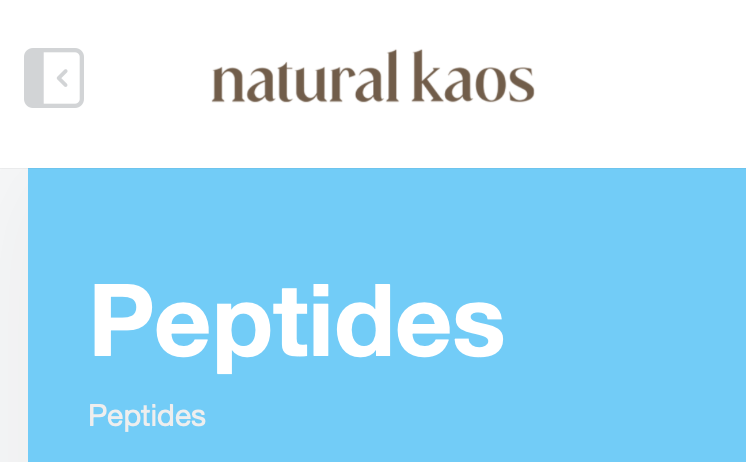Walkie Talkie On Monday Feb 26th 2024
BPC157 stands for “BODY PROTECTIVE COMPOUND” BPC157 influences the endothelium and helps it create more mucus.
The use of BPC157 may help with the following: * Ulcerative colitis * Crohn’s Disease * Inflammatory Bowel Disease (IBD) This peptide is stable in gastric juice because it’s made from gastric juice. Other peptides are unstable in gastric juices, which sets BPC157 apart.
What is TB500? There is another name for TB-500, which is Thymosin beta 4 (TB4). After conducting experiments on animal models, it was suggested that Thymosin beta 4 may play a significant part in regulating the structure of cells.
TB500 reduces inflammation and is associated with an improved immune system.
WHAT IS LEAKY GUT? Intestinal permeability, aka “Leaky Gut.”
Leaky gut syndrome is an intestinal condition in which a weakening of the intestinal walls allows bacteria and toxins into the bloodstream.
Our intestine walls are designed to allow nutrition to pass while preventing bacteria and toxins from entering our bloodstream.
This is the reason why when you hear about “leaky gut,” you also hear the phrase Intestinal Permeability.
Permeability describes the flow of material from one side to another.
GUT LUMEN
Our intestine is a long hose comprised of walls. When you hear “Gut Lumen,” it just means the hole the food is traveling down.
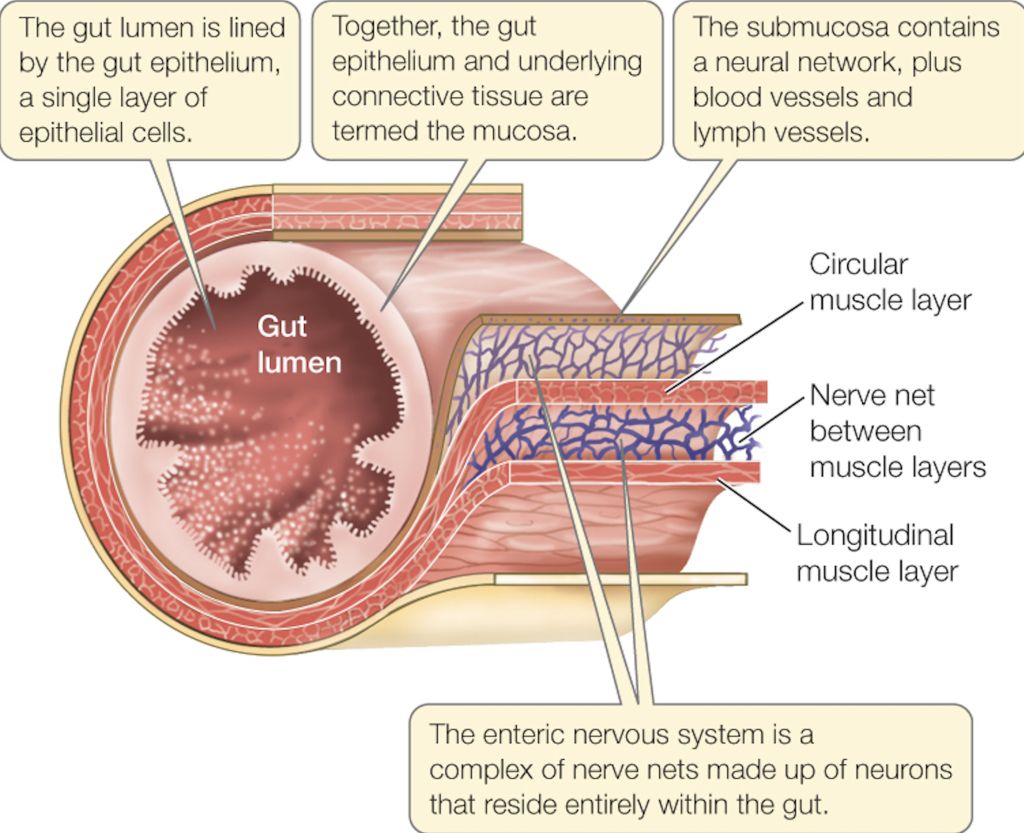
MUCOSA
The innermost wall or lining of the Lumen is called the Mucosa. This is the surface that interacts with everything we put in our mouths.
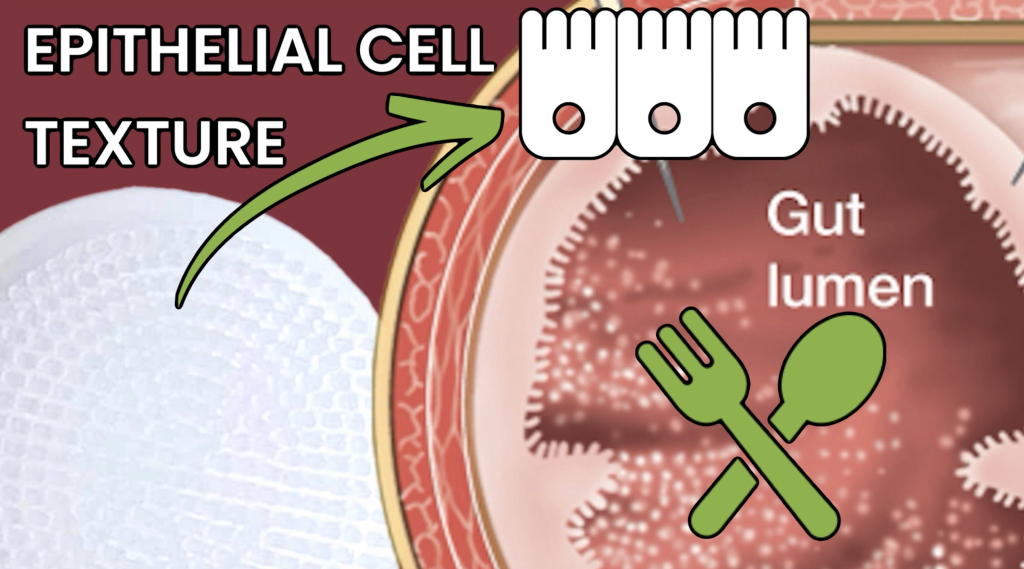
EPITHELIAL CELL LAYER
This is the surface our food touches and rides against as it descends. The interior lining of our intestine hose comprises a single wall of cells called the Epithelium. This cell layer has little fingers, similar to a silicon scrubbing face brush.
INTESTINAL MUCUS
Besides our epithelial cells allowing nutrition to pass, they also secrete a thick, gel-like mucus that protects our body from irritants.
Our epithelial cells’ first defense against unwanted elements is a robust, thick mucus layer.
Our mucus is an efficient system for protecting the epithelium from bacteria by promoting their clearance, thereby inhibiting inflammation and infection.
Maintaining the balance of bacteria and yeast is critical to keeping this mucus layer thick; thereby, our epithelial cells can stay healthy and secrete more mucus.
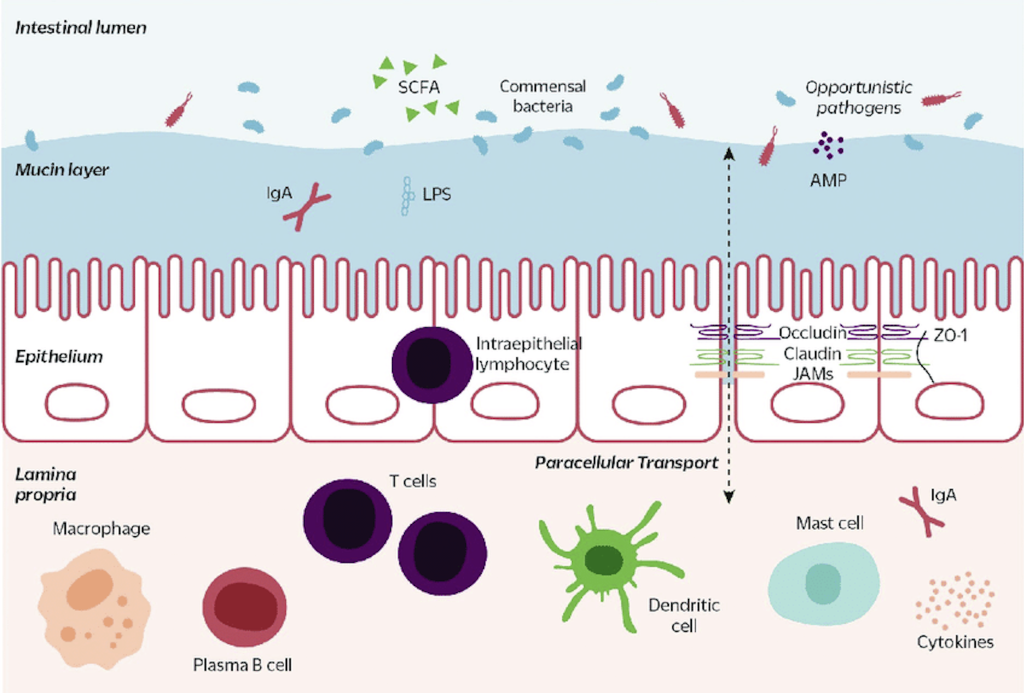
WHY IS THE EPITHELIAL LAYER ONLY ONE CELL DEEP?
Our intestinal epithelium is only a single layer of cells. It’s shallow in nature, so nutrition can enter while blocking bacteria.
Our epithelial cells are attached to one another by proteins called junctions. Rather than deep diving into the junctions and their individual functions, simply understand that we want these junctions tight.
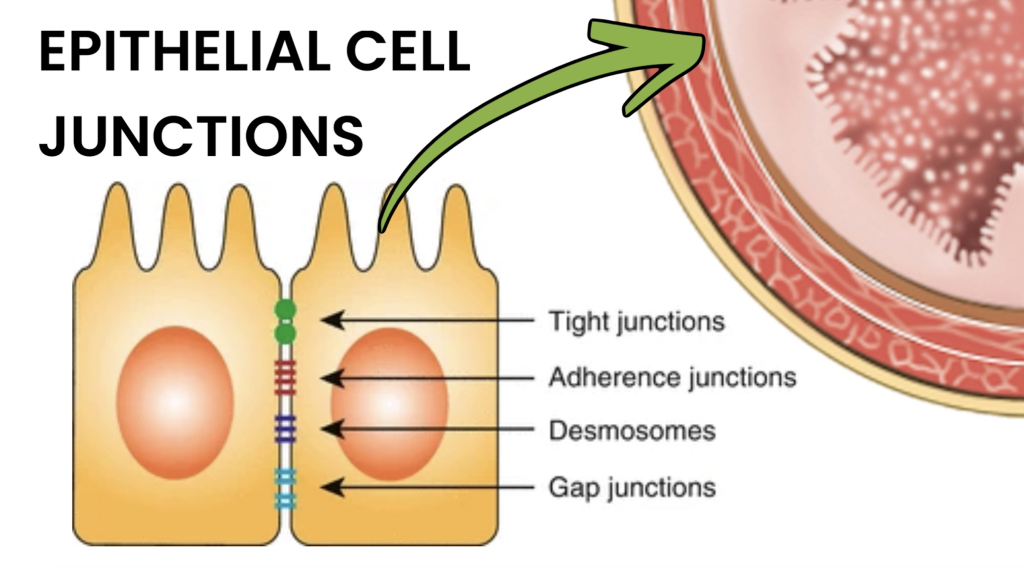
When nutrition passes through these junctions between our epithelial cells, it enters our bloodstream.
Without a thick mucus layer, our epithelial cells are left exposed to microbes and toxins we ingest daily.
ZONULIN
Zonulin is a molecule responsible for opening up the gaps between neighboring epithelial cells of the gut lining. Under certain conditions, too much zonulin is produced, causing the tight junctions between the epithelial cells to open up too much, creating a leaky gut condition.
WHY DOES INFLAMMATION OCCUR IN THE GI TRACT?
LAMINA PROPRIA
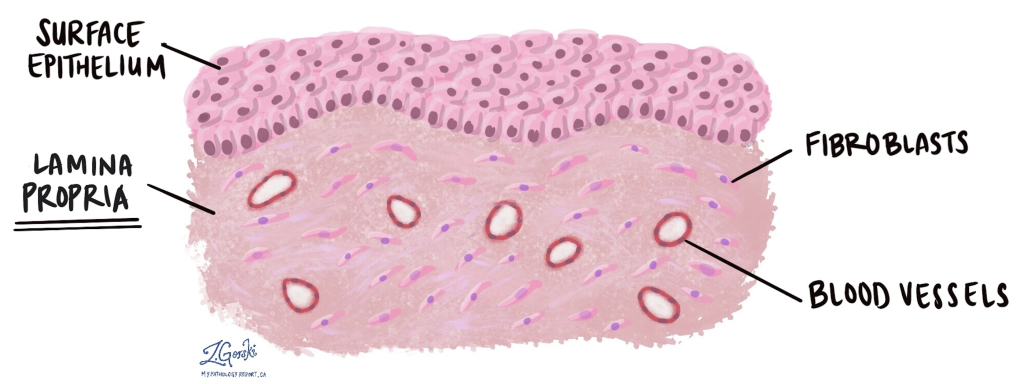
Lamina propria is a thin layer of connective tissue found just under the surface of Epithelial cells.
This thin layer of tissue consists of long, thin, supporting cells called fibroblasts. The fibroblasts are surrounded by small blood vessels and a variety of inflammatory cells that protect the body from microbes that may enter the body through the surface tissue, in this case, the epithelial cells.
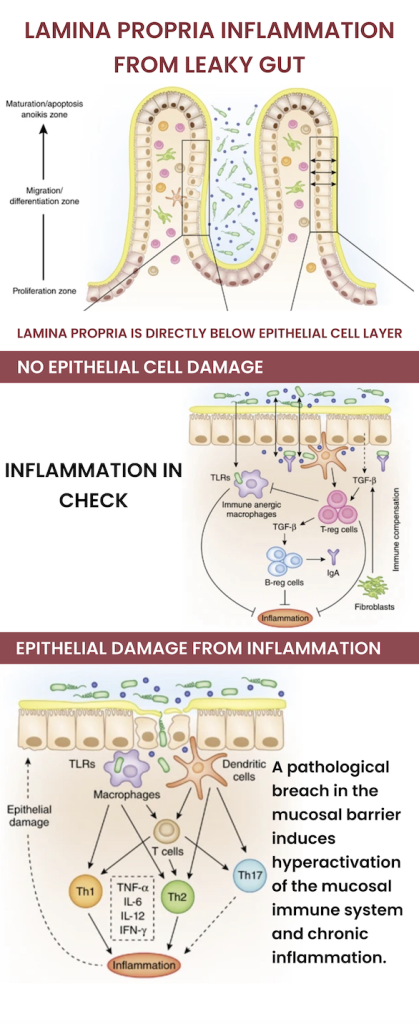
As irritants enter into the LAMINA PROPRIA layer, inflammation builds as our immune system fights invaders. This inflammation causes epithelial death, widening the already compromised junction.
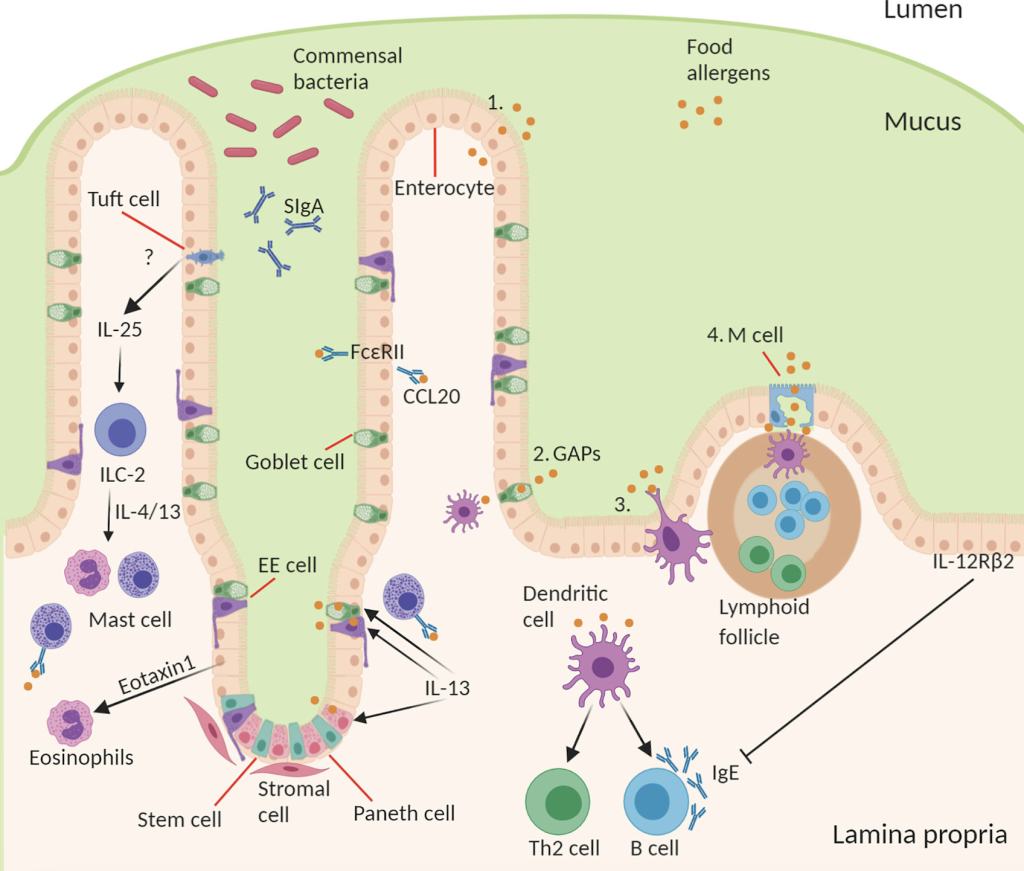
WE NEED THICK MUCUS
When our gut is void of a thick mucus lining (remember the epithelial cells make this mucus) along with tight junctions between these cells, nutrition is not absorbed correctly, plus bacteria and toxins have a wider path of entry.
The Leaky Gut concept is basically that our intestinal wall is weak, and toxins that would normally be dispelled are now entering our blood.
WHAT DESTROYS MUCUS?
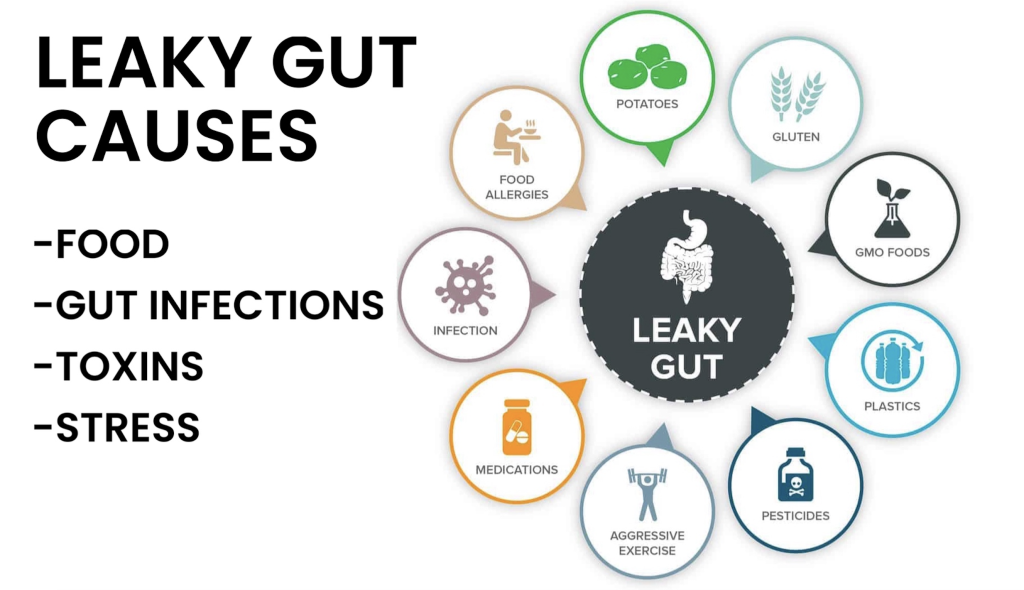
What are Leaky Gut Symptoms?
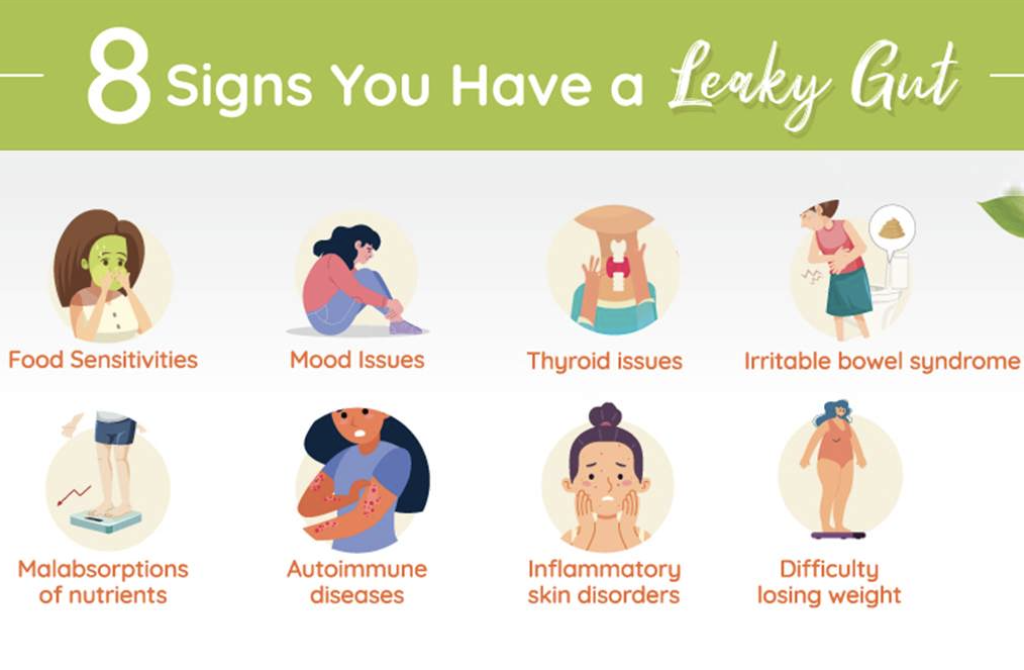
WHY DO I THINK I HAVE “LEAKY GUT”?
- My entire life, I’ve never had regular bowel movements. I’m completely acclimated to this condition. In fact, even while on Semaglutide (the GLP-1 peptide that helps satiate but slows down digestion), the slow bowel movement was normal for me.
- In my twenties, I was diagnosed with Ulcerative Colitis, which is an autoimmune disorder. I took steroids, and my symptoms resolved.
- I’ve always had a hard time keeping weight off no matter what I did.
- I do suffer from unstable moods, and I’ve used psych meds in the past to help during severe moments in life.
- In January 2024, I was diagnosed with Hashimoto’s Disease, which is an autoimmune disorder that destroys the thyroid.
The development of autoimmune disorders has been linked to the GI Tract because of the immune response that is displayed in the Lumina Propria layer. As the inflammation in the GI tract persists, it leads to systemic issues all over the body. This is because of the Gut-Brain Axis.
GUT-BRAIN AXIS
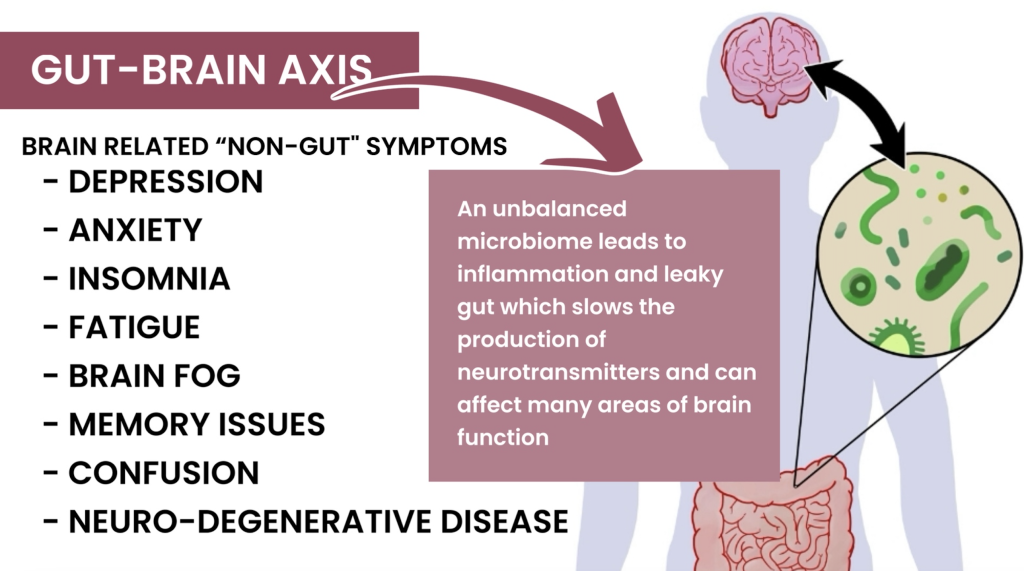
The gut-brain axis (GBA) consists of bidirectional communication between the central and the enteric nervous system, linking emotional and cognitive centers of the brain with peripheral intestinal functions. Recent advances in research have described the importance of gut microbiota in influencing these interactions.
Besides many of the physical symptoms of leaky gut, I also have Anxiety, Insomnia, Fatigue, and Brain Fog. I imagine if I don’t quickly solve these symptoms, I will eventually develop more severe neuro-degenerative issues.
We can destroy our intestinal biome with diet, stress, and antibiotics, but some of us are more susceptible to this condition than others. I believe I must have genetic contributors as my mom, her mom, and my great-grandma all had bathroom issues and, consequently, mood disorders. As I’ve researched, I believe this is all linked, and I believe that by healing my intestinal wall, I will be able to heal my mind along with the other physical improvements.
TESTING GI TRACT
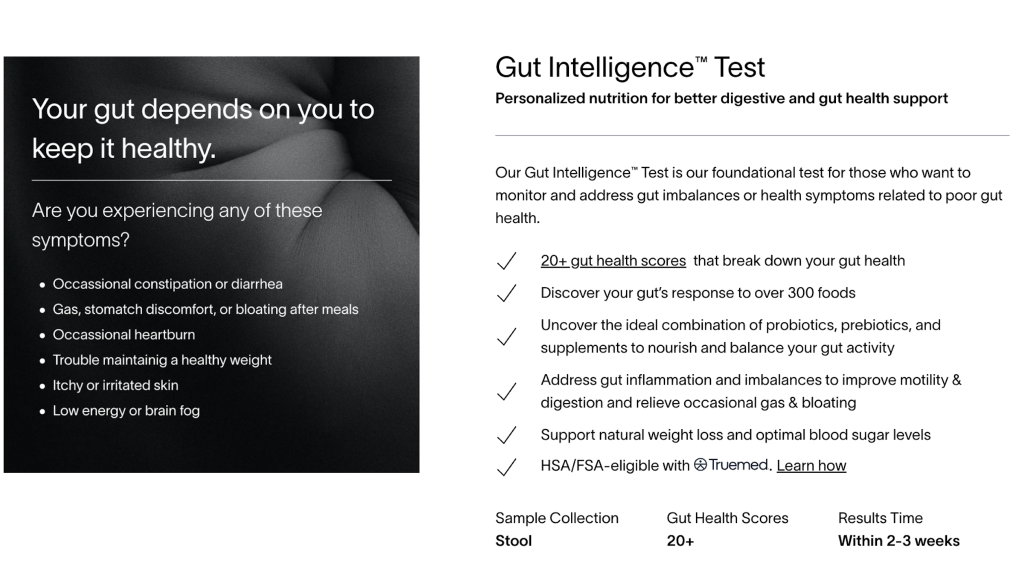
Until I have my GI Intelligence test results, I’m restricting gluten, which is known to be inflammatory, and I’m adding in probiotics like Kefir and kimchi.
Remember Zonulin? The Zonulin molecule opens tight junctions, allowing nutrition inside. Zonulin can be tested for and tracked. Gluten increases levels of Zonulin, which is why people who have celiac disease avoid gluten.
Now you understand what Leaky Gut is, why it occurs, and how it can damage many systems in your body.
PEPTIDE’S I’M USING
Besides diet changes, I decided to use BPC157 with TB500 to amplify the healing of my gut mucosal layer.
What is BPC157?
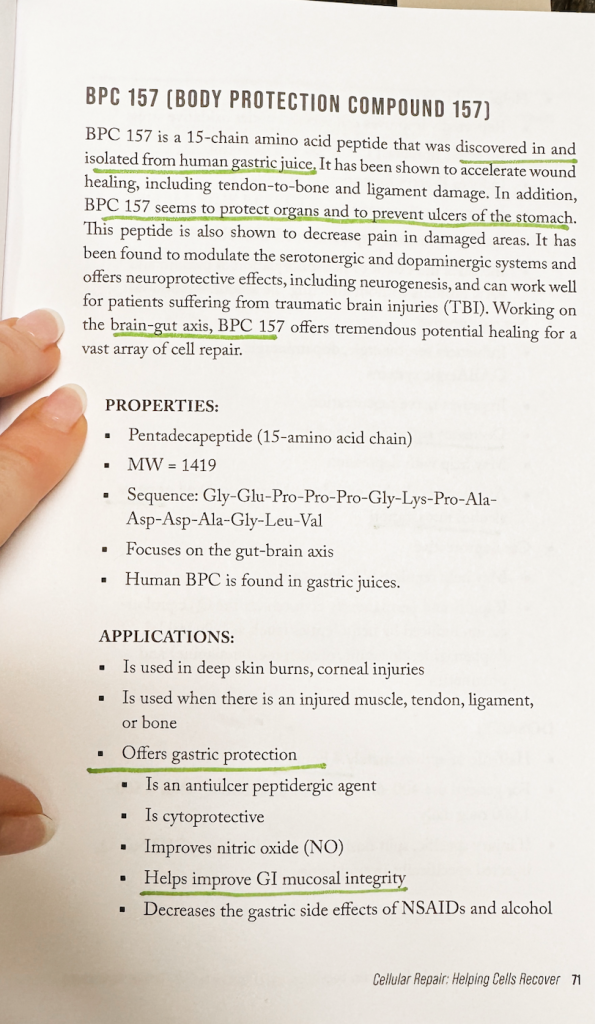
BPC, a.k .a. Body Protective Compound, is synthesized from gastric juices. It was discovered in the early 1990s.
Researchers found that BPC157 has a positive impact on many gastrointestinal issues, along with a reduction in oxidative stress and improved blood vessels.
BPC157 influences the endothelium and helps it create more mucus.
The use of BPC157 may help with the following:
- Ulcerative colitis
- Crohn’s Disease
- Inflammatory Bowel Disease (IBD)
This peptide is stable in gastric juice because it’s made from gastric juice.
Other peptides are unstable in gastric juices, which sets BPC157 apart.
What is TB500?
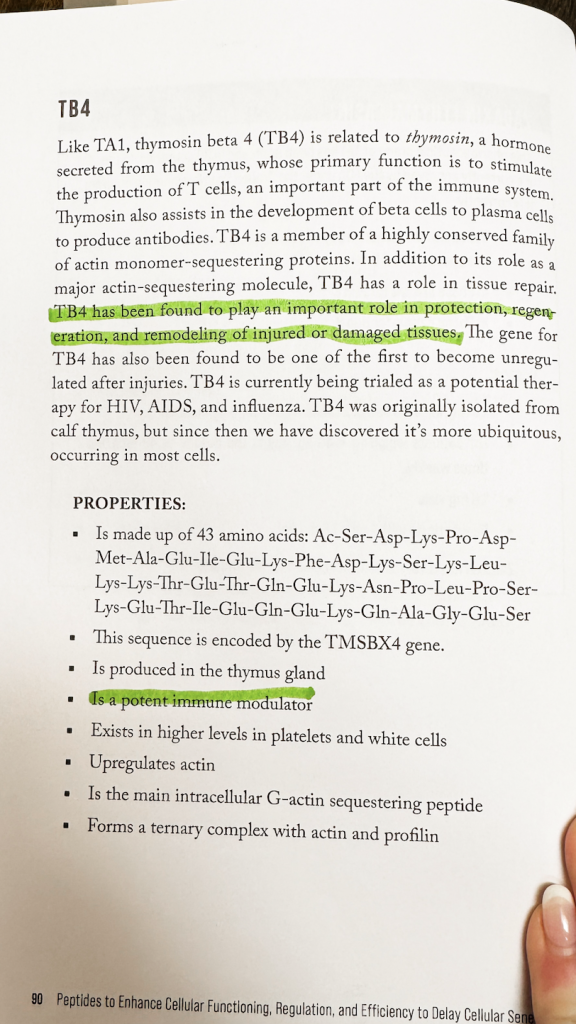
There is another name for TB-500, which is Thymosin beta 4 (TB4).
TB4 is found in every cell in the body. It is found in higher amounts at injury sites as it promotes healing.
TB4 is not identical to TB500. TB4 is made up of 43 amino acids.
TB500 has 7 amino acids, it’s considered a fragment.
As peptide research continues, scientists have identified what amino acids in the sequence actually bind to the anti-inflammatory receptor, they isolate that sequence and create a new peptide, in this case TB500 is a fragment chain from T4 that is focused on inflammation reduction.
TB4 (43 amino acid chain) has wider effects than TB500. However, because of this isolation TB500 is better at reducing inflammation.
After conducting experiments on animal models, it was suggested that Thymosin beta 4 may play a significant part in regulating the structure of cells.
TB4 works by binding to actin for cell mobility. It is responsible for building the matrix or cytoskeleton that we need for cell growth.
Stem cells need to TB4 because they require a scaffold structure to grow and require the information TB4 signals so that the Stem Cell knows where to go and what type of cell to become.
This is the reason TB4 is the first activated protein when it comes to cellular growth and telling stem cells what is needed.
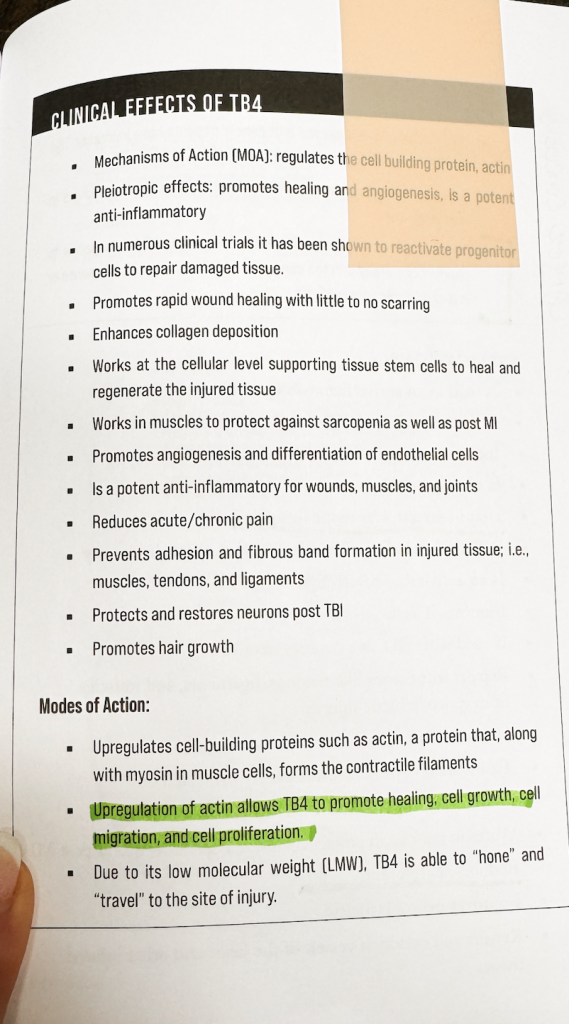
.
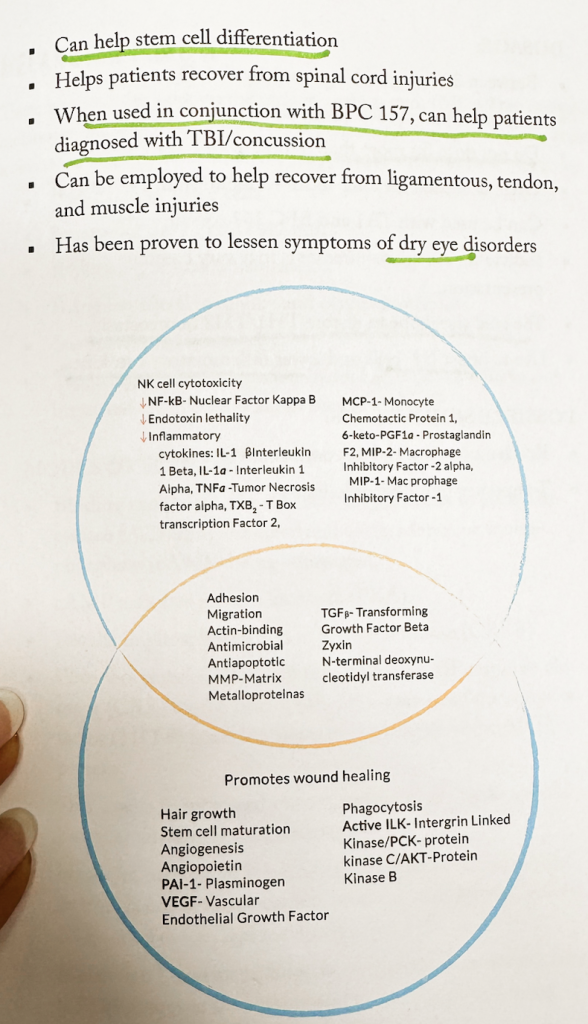
.
TB4 works by binding to actin for cell mobility. It is responsible for building the matrix or cytoskeleton that we need for cell growth.
Stem cells need to TB4 because they require a scaffold structure to grow and require the information TB4 signals so that the Stem Cell knows where to go and what type of cell to become.
This is the reason TB4 is the first activated protein when it comes to cellular growth and telling stem cells what is needed.
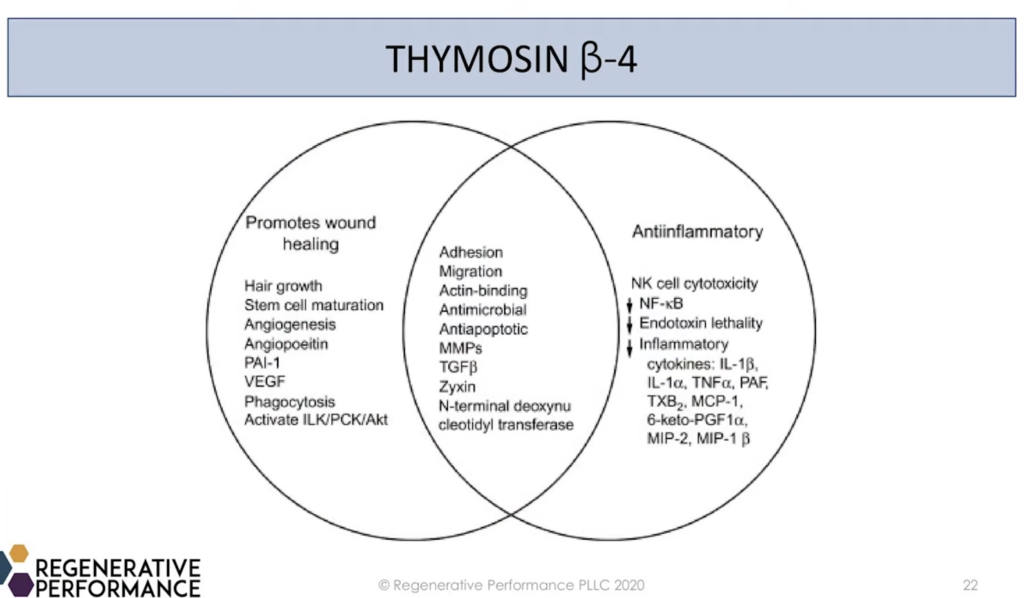
How TB4 works in the body.
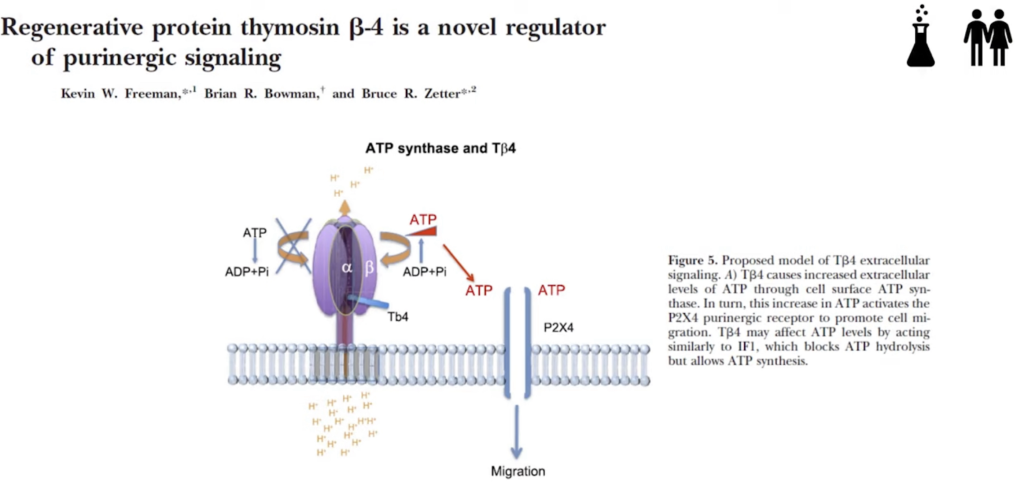
TB4 generates ATP using a hydrogen gradient, this opens the P2X4 port which signals cell migration.
Why are BPC157 & TB4 combined?
Researchers have shown that these 2 peptides can manage weight loss, promote muscle growth, and deliver anti-aging benefits.
It’s found that improving blood vessels is necessary to deliver immune function to cells along with the site of the injury or infection.
The ability of the peptides to spread blood vessels, which are passageways for these critical aids, helps explain why they are excellent at tissue repair.
BPC157 interacts with the body’s vascular endothelial growth factor (VEGF) receptors.
Meanwhile, TB500 directly increases the production of VEGF, which is why it’s essential to pair the two peptides together.
I’ve been injecting BPC157 with TB500, as a combo, you can understand how effective they are at injury repair. This is why these peptides can be injected at the injury site to improve vessel growth and reduce inflammation.
After research, I believe taking BPC157 with gut healing in mind is actually more effective as an oral supplement. This is because when taken orally, BPC157 can survive the gastric acids of the stomach and be directly absorbed in the small intestine, hopefully impacting the epithelial cell layer quicker.
The injection is still beneficial, especially for injury-specific applications. However, not everyone wants to inject. In particular, taking an oral dose when healing the gut appears to perhaps be more effective.
I will continue my cycle with BPC157 and TB500; however, I will use BPC157 orally as well to see if I can improve my mucosal lining more quickly.
Further, if you are injecting BPC157 + TB500 with healing your gut as the primary focus, you don’t need to stagger the dose with two injections. You can do one injection per day with your total dose rather than breaking them up AM and PM.
For specific injury injection it’s found to be more effective to break this dose up AM and PM.
Again, these peptides are incredible at effective healing. But your purpose plays a huge part in how you use them.
BPC157 ORAL & INJECTION DOSING
LINK: BPC157 ORAL SUPPLEMENT 500mg
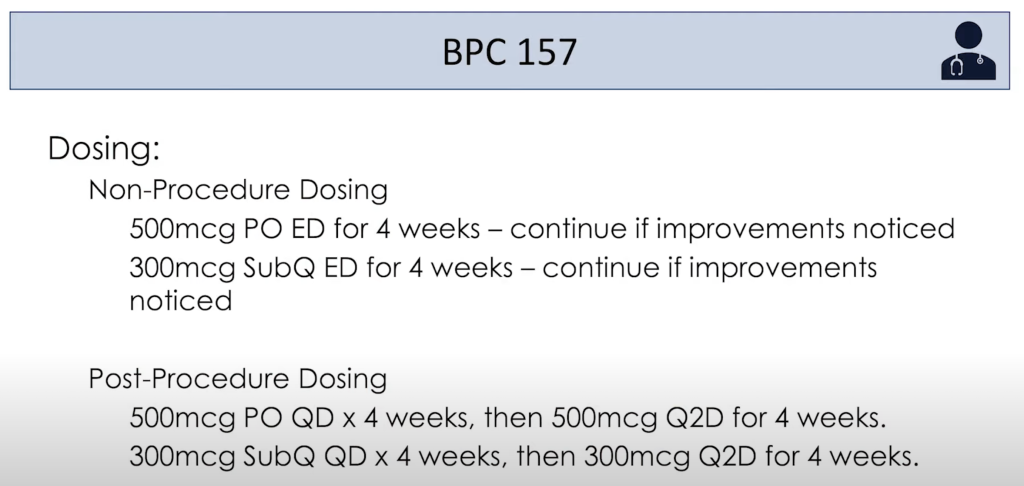
LINKED SOURCES
Thank you for joining me today and I hope you join me for more live content! We do have a Peptide group in The Natural Kaos App ! xo – Kim
NATURAL KAOS APP LINKS
